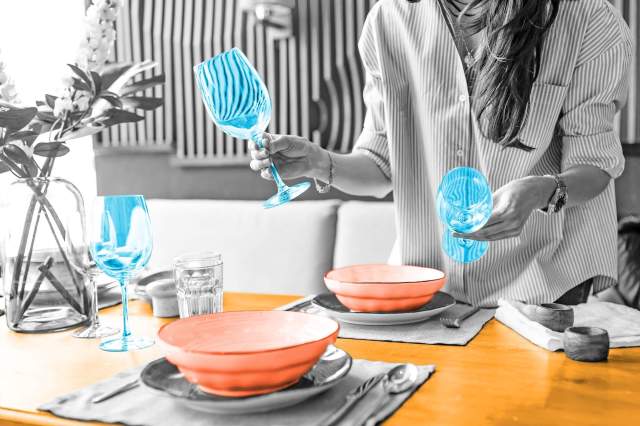
Don’t Show Up Early
You know the adage “early is on time and on time is late”? That’s for work meetings, doctor’s appointments, and dates, not for most parties. You’ll want to show up within 15 minutes after the listed start time if possible, but showing up early can leave a busy host scrambling to accommodate you. If you arrive more quickly than anticipated, go for a walk, grab a coffee, or just play around on your phone until the event begins.

Bring Easy Gifts for the Hosts
Host(ess) gifts are a classic token of appreciation for an event-thrower, and they’re still appreciated today. Flowers are one of the most common host gifts, but they can create some extra work for the recipient if they have to scramble to find a vase. If you do bring a bouquet, arrive with a vase — that way it’s all ready to go. If your host drinks alcohol, wine is another great gift to bring, but don’t expect it to be opened that night. If you bring food, go for something shelf-stable so the host doesn’t need to make room in their fridge.
Gifts are optional for many gatherings, but considered customary for housewarmings and gatherings with a guest of honor, unless otherwise specified.

Stand When You’re Being Introduced
When you’re introduced to someone, whether by someone else or the person themselves, it’s customary to stand up. It’s just a small gesture, but it goes a long way toward signaling to others that they have your full attention — and that you welcome them to the table or the conversation.
If you’re the one doing the introducing, look at the person you’re speaking to first, then turn to the other person at the end. It’s helpful to mention something the two people have in common if you can think of anything in the moment, too.
More Interesting Reads

Start With the Utensils on the Outside
If your event is formal and includes a sit-down dinner, you may notice more forks, spoons, and knives than you’re used to. It can be intimidating, but the rule here is pretty simple: Start on the outside and work your way in. (You may already know this tip from the movie Titanic.)
Why so much silverware, and why use it in a specific order? If planned correctly — that’s on the host, not you — each course then gets the ideal tool for the job, and diners can get a little preview of what courses they might be enjoying.

B and D for Bread and Drink
There’s a lot more than utensils in a place setting. How do you make sense of the rest? Another tip for navigating the table involves using your hands to find your drink and your bread plate (a little plate near your big plate). With each hand, make a circle by touching your thumb to your index finger, then putting the rest of your fingers up. One hand should make a lowercase “b” and the other should make a lowercase “d.” The bread plate is on your left, or the “b” side. Your drink is on your right, or the “d” side.
This helps guests to avoid taking other people’s stuff so they don’t accidentally sip a stranger’s water or force a fellow diner to butter their bread on a dinner plate (quelle horreur!).

The Host Gives the First Toast
Toasting-time is typically as soon as beverages are poured, either at the beginning of a meal or just before dessert. The host has first dibs to toast — it is their event, after all, and they might have something planned.
If the host stays silent, guests can jump in. Stand and ask for everyone’s attention (don’t clear your throat or tap on your glass) and acknowledge the hosts. Keep it short and sweet unless you’ve prepared something. In the event that you are the honoree of the toast, don’t drink! Just smile, nod, and enjoy the moment.

Write a Few Thank-You Notes at a Time
Written thank-you notes are still customary for events like weddings and baby showers, and while some say you have a year to write and send them, the Emily Post Institute gives a three-month timeline. To help hit that benchmark, the institute recommends writing a few thank-you cards at a time every day or two to make it seem like less work. It will free up some time to write more personalized messages, too.












